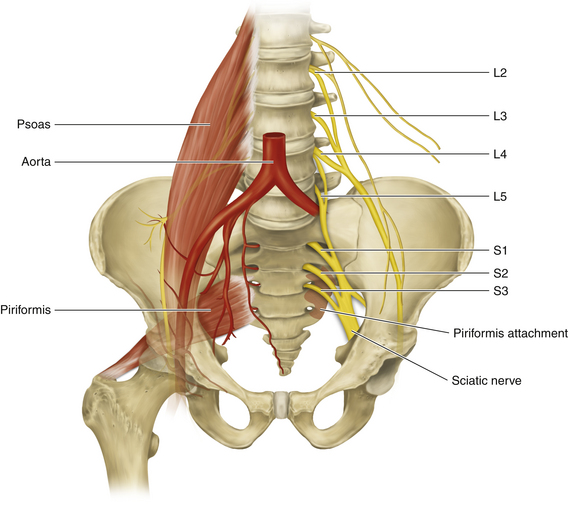Sciatica is a distressingly common condition normally associated with a variety of unpleasant sensations, such as bolts of pain shooting down one leg or a persistent ache in the lower back or hip area. For some, sciatica can be triggered by drastic physiological changes such as pregnancy or specific injuries. For others, the condition gradually creeps up on them in the form of over-worked and under-rested muscles, which can eventually lead to recurring or increasing pain. Despite the amount of people affected by it, sciatica and its symptoms are often misunderstood by many, even those that have been diagnosed with it themselves! In this post, we aim to clarify some of its usual causes and how they can be rectified with the right treatment.

The symptoms of sciatica generally result from compression of the sciatic nerve, which exits the spinal canal as a group of nerves, all of which pass between the vertebrae or discs of both the lumbar region (L4 and L5) and the sacral region (S1 – S3) of the spine. From these points, the nerves then merge into the longest nerve of the human body, passing through the greater sciatic notch of the pelvis and down the leg through muscles such as the piriformis and hamstrings. Though many believe that sciatica can only result from slipped or bulging vertebrae, the muscles and other anatomical structures surrounding it – such as bones, ligaments and tendons – are also capable of applying pressure anywhere along its length. This can lead to constant and steadily increasing discomfort. Intermittent symptoms – which occur on and off – are often caused by actions that make these muscles move in specific ways or considerably increase the blood supply to them in a short space of time. Examples of such actions can be found in different types or extended periods of exercise.

Though dependant on its cause, sciatica can usually be identified by the presence of some – if not all – of the following symptoms:
- Pain in the lumbar (lower back) or hip region
- Pain in the posterior region (rear) or leg that worsens whilst in a sitting
- Burning, tingling, weakness or numbness of the leg or foot
- Problems when trying to move the leg or foot
- Continuous pain in the posterior region, particularly on one side
- Shooting pains that prevent or restrict an individual from standing up

All of these pains can become aggravated by involuntary physical responses, such as coughing or sneezing, and may affect one or both sides of the lower body and limbs. Most of the time, sciatica symptoms last no more than several weeks. However, those with severe or chronic (long-term) sciatica may experience symptoms for a year – if not longer – especially if their condition remains undiagnosed and untreated. Though it may be possible for sciatica to affect anyone with sciatic nerves, some people have a greater chance of developing it, including but not limited to:
- pregnant women
- office workers
- students
- overweight people
- bus and taxi drivers
- inactive elderly people
Using this knowledge, Hijama practitioners can place cups along the length of the nerve and upon any structures that may be compressing it. By applying negative pressure or suction to any tight muscles surrounding it, they could alleviate the pressure caused by them and nourish parts of the nerve that may have been damaged by restricted blood flow. In addition to this, treating the areas with wet cupping could remove any trapped cellular waste that might be hindering the function of the sciatic nerve. Though we do not treat pregnant women at Pure Therapy, those with post-pregnancy sciatic pain are always welcome at our clinic.
We hope that this information has benefited you, our dear readers, and we would love to hear from you. Comments, questions and weekly topic suggestions are always welcomed and greatly appreciated.
Thank you for reading!
The Pure Therapy Team


Hi Sir,
I am suffering from sciatica pain for two years and no relief i got
LikeLiked by 1 person
Hi!
Do you live in England? If you do, why don’t you visit our clinic? We might be able to help you with your pain.
LikeLike